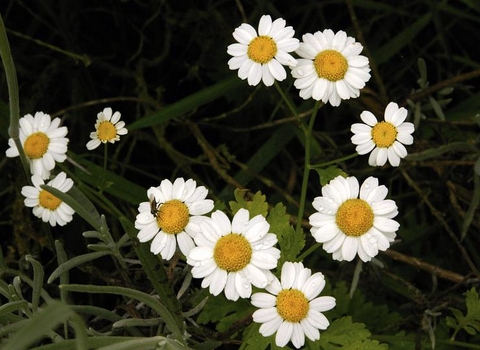
©Eric Delcroix
Chamomile
Chamomile releases a beautiful, apple-like scent when crushed. For this reason, it was used in Elizabethan times as a plant for lawns and seats! Today, it is scarce in the wild, its grassland habitats under threat.
Scientific name
Chamaemelum nobileWhen to see
June to AugustTop facts
Category
Stats
Height: up to 30cmClassified as Vulnerable on the Vascular Plant Red Data List for Great Britain. Priority Species under the UK Post-2010 Biodiversity Framework.
